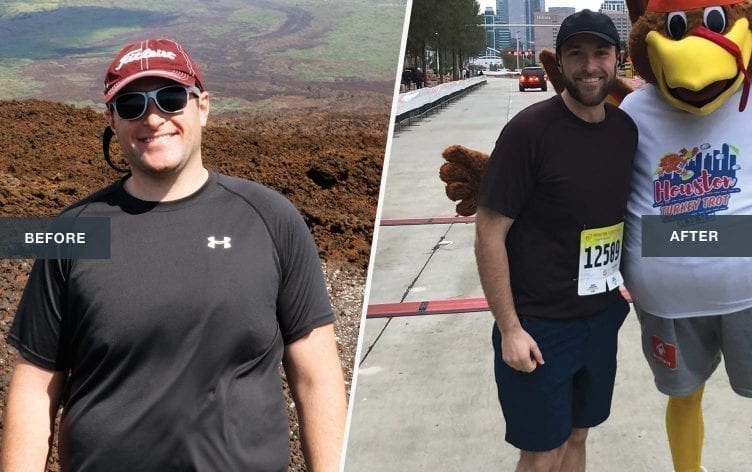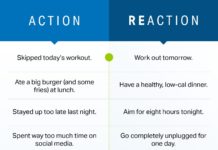
Mark Tried Countless Diets Before Losing 100 Pounds With MyFitnessPal
Mark Gibson is no stranger to diets. Whole30, Atkins, South Beach, Nutrisystem — he’s tried them all.
Gibson has struggled with his weight for most of his life and can remember hitting 200 pounds as early as sixth grade. But in 2013, the Austin, Texas, resident reached his heaviest weight yet and knew something had to give.
“I was 325 pounds,” he remembers. “I was deep in my ‘analyst days’ and working a lot. I just got to that breaking point where I was like, ‘Man, I’m huge and I have to do something.’”
Gibson soon discovered MyFitnessPal, but he’ll be the first to admit he still had a lot to learn about using the app sustainably. Not only was he not eating enough calories, he wasn’t continuously logging his meals or weighing in. Though he succeeded in initially losing weight, he only kept it off for five months.
“If you wait a week or wait a month to weigh-in, all the sudden, for people who struggle with their weight, you’ve gone up a lot,” he says. “It seems insurmountable. So what do you do? You go eat. It becomes this cycle of getting beyond what you feel you can come back from.”
Around Christmas 2017, Gibson returned home from visiting his parents in Hawaii to find not a single one of his work shirts fit. In order to avoid spending too much money on clothes, he went out and bought just two shirts to get him through the entire month of January — and recommitted to MyFitnessPal once and for all.
Looking back, he says he’s now thankful for that first time around, because it laid the groundwork for understanding what worked for him and what didn’t. This time, he would do things differently, which started with one important habit: consistent, accurate logging.
“I made a commitment to log every calorie, regardless of what it was,” he says. “I didn’t want to feel like I was limiting myself, so I allowed myself to eat what I wanted. But once my calories were done for the day, they were done.”
Soon, Gibson says he was eating healthier by default. He found that in order to actually feel full on his calorie allotment, he couldn’t stick to high-calorie, low-volume foods since they didn’t contain enough fiber or protein to satiate him. He began eating more lean meats, roasted vegetables and fresh produce to fill his stomach.
As time went on, tracking became easier, he says. He often repeated meals, which were already saved in his recent foods on the app, so logging the day’s intake took only a few moments. He weighed in every day and by November of 2018, Gibson hit his goal of losing 100 pounds.
“Frankly, if you look at my weight loss line, it was absolutely linear,” he says. “I lost 20 pounds my first month, and from there on, I lost between 8–12 pounds every single month. I did not deviate.”
Gibson also started incorporating physical exercise into his routine once the weight began to fall off. He worked his way up from a mile to a 5K and, eventually, a 10-mile run. He tackled other physical challenges and joined a family member in completing 50 pushups and 15 pullups in succession.
Even though Gibson has been in maintenance mode for almost a year, he still logs his food every single day — more than 600 days of consecutive logging — and steps on the scale (unless he’s on vacation).
“For me, it’s the consistency of weighing and logging that matters most,” he says. “Even if you log a bad day, that’s fine, because then you can look back and say, ‘I know why I am where I am.’”
Keeping an eye on his weight and tackling any increases before they get out of hand has been one of the biggest keys to this success, he says.
For those looking to lose weight, Gibson recommends committing to logging every meal and sticking with it for at least 30 days until it becomes a habit.
“Not to make it a commercial, but my MyFitnessPal is such a fantastic tool … yet it’s a tool a lot of people use for 10 days, and then they just don’t use it again,” he says. “You have to put in the time, and you have to put in the effort to log and to weigh.”
He also advises others to avoid seeing the scale as a measurement of their self-worth or confidence, and instead, to try and use it impartially.
“For somebody who has been as big as I have, you get to this point where you hate the scale because you know what the scale is going to tell you,” he says. “But the scale is just a tool to show your progress. If you can objectively stand on the scale every day and say, ‘This is just a tool to show me how I’m doing,’ then your mindset changes.”





